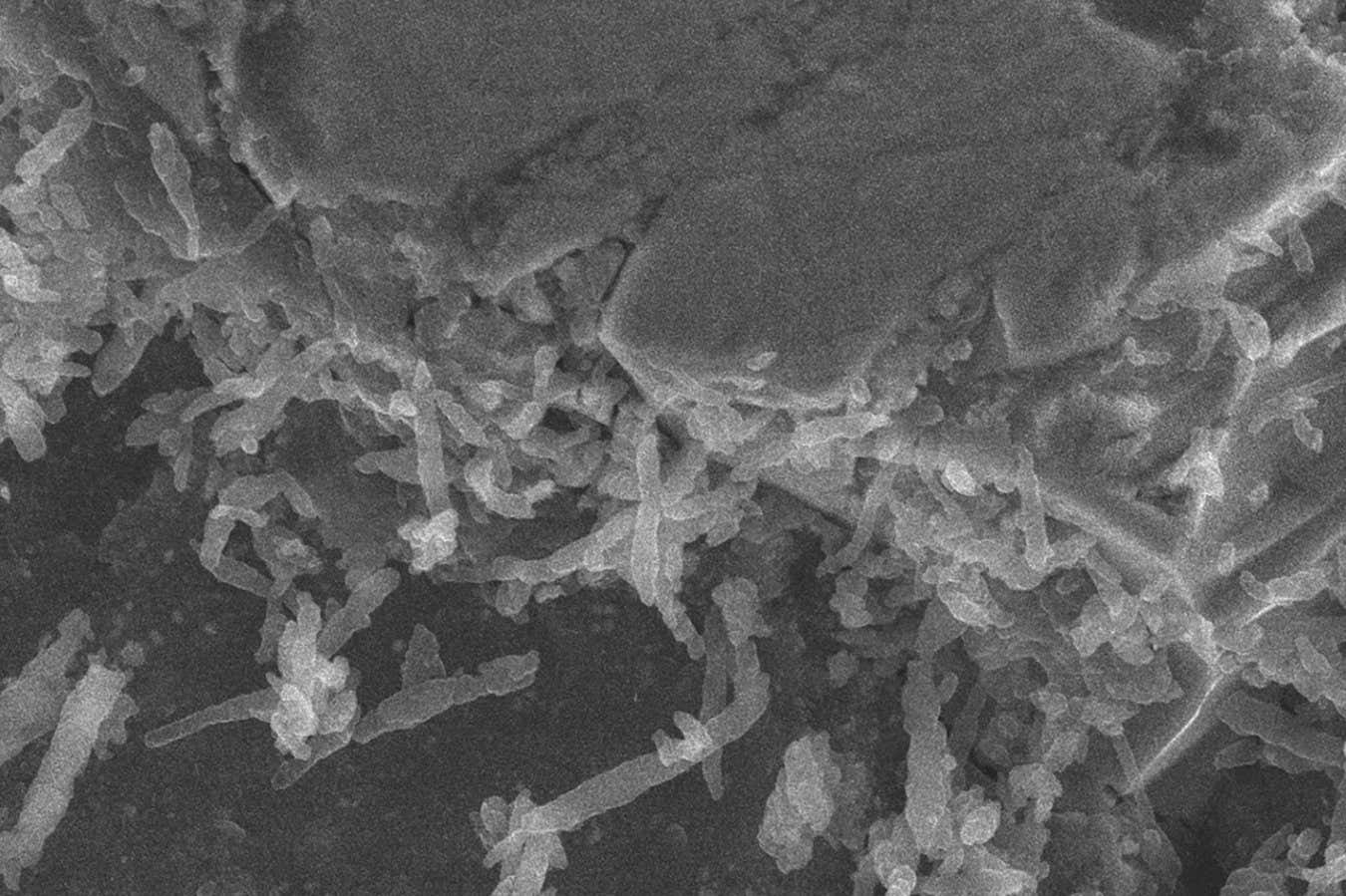Bacteria on a sample from the Ryugu asteroid, viewed with an electron microscope Matthew J. Genge et al. 2024
A rock from the asteroid Ryugu that was brought back to Earth appears to be festooned with microbial life. But these microbes almost certainly came from Earth rather than outer space, say researchers. This contamination serves as a cautionary tale in the search for extraterrestrial life in future sample return missions, such as from NASA’s Perseverance rover on Mars.
In 2020, Japan’s Hayabusa 2 spacecraft returned to Earth with 5.4 grams of rock from the 4.5-billion-year-old asteroid Ryugu. After the sample capsule landed in Australia, it was transported to a custom-built facility in Sagamihara, Japan. There, the capsule was first opened inside a vacuum room, itself located within a clean room, before moving to a pressurised nitrogen-filled room for longer-term storage. From there, parts of the sample could be put inside nitrogen-filled containers and sent out for researchers to study.
Advertisement
One of these samples was sent to the UK to be studied by Matthew Genge at Imperial College London and his colleagues. Genge and his team initially scanned the sample using X-rays, which showed no evidence of bacteria.
The Ryugu asteroid sample collected by Hayabusa 2 JAXA
Three weeks later, they transferred the sample to a resin, and a week after that they looked at it more closely using a scanning electron microscope (SEM). When Genge and his colleagues first looked at the sample and saw what looked like filament-shaped bacteria, his students were almost “falling off their chairs” at the prospect they had discovered extraterrestrial life. “It was an exciting moment, but also in the back of my mind I knew from previous studies how easy it is for bacteria to colonise rocks,” says Genge.
Sign up to our Launchpad newsletter
Voyage across the galaxy and beyond with our space newsletter every month.
By tracking the growth of the bacteria with follow-up SEM measurements, they found the number of bacteria changed in a similar way to known microorganisms. When combined with their familiar shape and their absence during the first X-ray scan, it is highly likely they were terrestrial in origin, says Genge.
He thinks the sample was probably contaminated after it was embedded in resin. This took place in a facility that was also handling terrestrial space rocks, which often contain bacteria that are adapted to living in rock specimens. “It only needs one bacterium or one bacterial spore in order for this to happen,” he says. “When we’re preparing meteorite samples, for example, we usually don’t see this colonisation occurring, and that’s because the chances are really low. In this case, a single bacterium fell on that sample and started to grow.”
However, it should serve as a warning for any future sample return missions, adds Genge. “The discovery of microbes within a space return sample really should be the gold standard for discovering extraterrestrial life. If we were ever to do that — if we flew to Mars, took some samples, brought them back and found microbes in them — you would say that was the smoking gun,” says Genge. “But our discovery really shows that you have to be so incredibly careful about that interpretation, because samples are so easy to contaminate with terrestrial bacteria.”
Javier Martin-Torres at the University of Aberdeen, UK, agrees the population change of the microbial filaments suggests a terrestrial origin, but this doesn’t rule out the possibility they came from somewhere else. “When you want to determine that those microorganisms are not from an extraterrestrial origin, then you should do some DNA sequencing,” he says.
Scientists already knew bacteria were extremely good at living in meteorite samples that had landed on Earth, but this only strengthens the case that bacteria might survive on material elsewhere in the solar system. “Microorganisms can utilise organic materials within meteorites in order to sustain themselves – they are dining out on extraterrestrial snacks,” says Genge. “So maybe there is an ecosystem, a pretty sparse ecosystem, but an ecosystem on Mars which is supported by manna from heaven, by meteorites that fall on the surface.”
Journal reference:
Meteoritics & Planetary Science DOI: 10.1111/maps.14288
Topics:



